Foundation Options for Your EcoPod
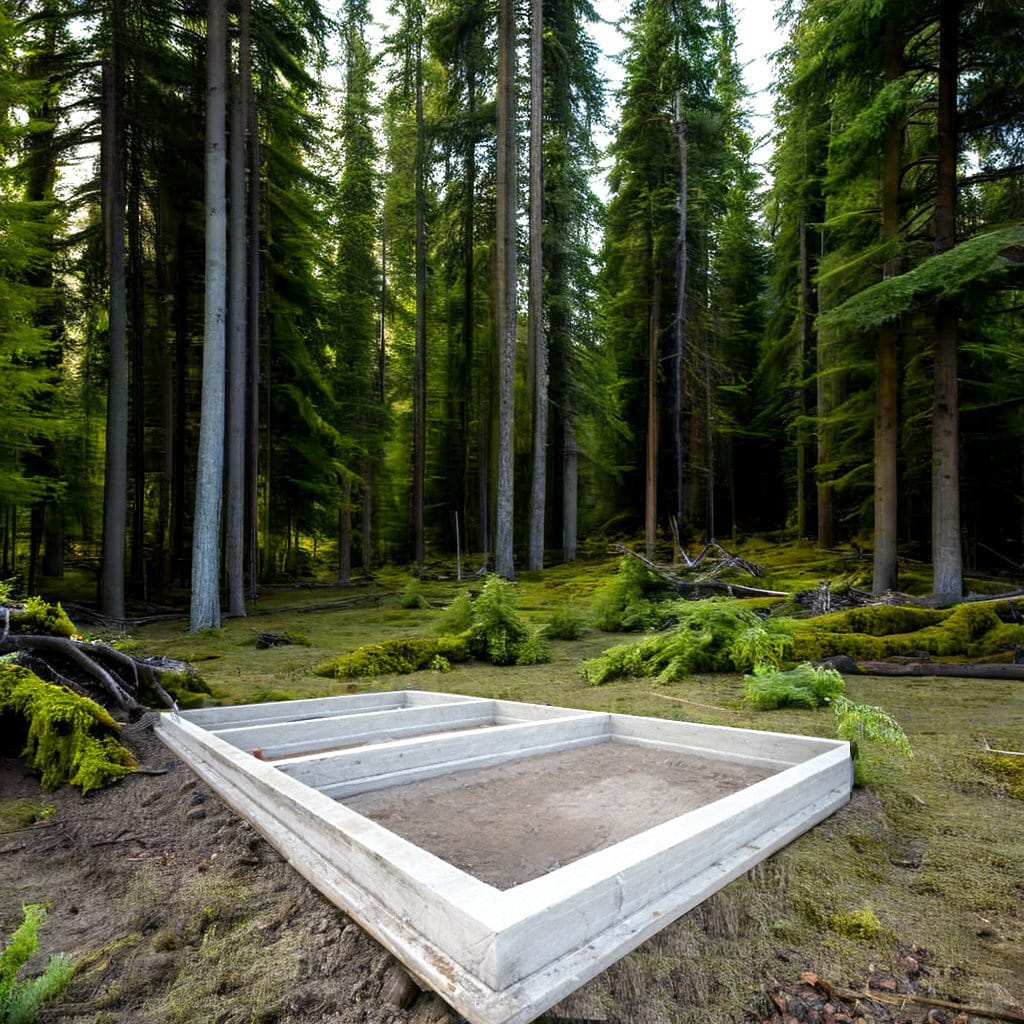
Having Open Space Is Not Enough
Placing Your Home: Choosing the Right Foundation for Your EcoPod
Imagine having the freedom to take your home with you wherever you go, whether it is your backyard, a future dream home site, or a vacant property waiting to be transformed. With EcoPods, this vision becomes a reality, offering portability and flexibility that traditional homes cannot match. However, while the idea of setting up an EcoPod may seem straightforward, ensuring a solid foundation is essential for the longevity and stability of your home.
The Importance of a Solid Foundation
Before delving into the various foundation options for your EcoPod, it is crucial to understand why a sturdy foundation is paramount. Just like a house built on shaky ground, an EcoPod situated on an uneven or unstable surface can lead to a host of issues, including structural damage, poor insulation, and compromised durability. Therefore, careful planning and execution are key to ensuring the foundation upon which your EcoPod rests is robust and level.
Treating Your EcoPod Installation as a “New Build”
One aspect that is often overlooked when setting up an EcoPod is the importance of treating it as a new build in the area where you reside. This means adhering to local building codes and regulations, including obtaining any necessary permits for installation. While the allure of a portable home may seem like it bypasses the need for permits, failing to comply with local regulations can result in fines and legal complications down the line.
Is a Permit Needed?
Usually, yes it is. However, at EcoPod we are here to help you with the whole process. We can get the permit for you. Or you can get one yourself. Getting a permit is usually not that difficult. Local municipalities have been handed a new directive from the Federal Government to encourage more lower-priced housing, and more Secondary Dwelling Units (SDU’s). To apply for a permit you will need to pay the permit fee and submit drawings which show what the structure will look like and how it is made. We will supply you with those drawings. Or alternatively, we can handle the whole permit process for you.
Foundation Solutions for Your EcoPod
Now that we have highlighted the significance of a solid foundation and the importance of following local regulations, let’s explore some expert recommendations for positioning your EcoPod:
ARTICLE INDEX:
SEASONAL USE
1) Railroad Tie Foundation
2) Runner Foundation
3) Helical Pile/Screw Foundation
4) Sonotube Foundation
5) Non-Heated Slab Foundation
FOUR SEASON USE
1) Sonotube with Insulated Panel Skirt Foundation (recommended)
2) Heated Pit Foundation
8) Heated Basement Foundation
SEASONAL USE
1) Railroad Tie Foundation – Seasonal Use
Some clay backfill, and a few railroad ties can provide you the simplest foundation that you can make. This type of foundation can used only for “seasonal use” of all EcoPod models.

Pros | Cons |
|---|---|
Low cost | Not ideal on slopes |
Fast installation | Not ideal in high moisture areas |
Easy for DIY | Load limitations |
Maintenance due to shifting |
2) Runner Foundation – Seasonal Use
A runner foundation, also known as a strip footing or continuous footing, consist of thin slabs or pads of concrete poured along the length of the home. Beneath these pads, a layer of stone or gravel is usually placed to stabilize the base. Rebar is embedded in the concrete as it is poured. Runners are well-suited for homes built on flat terrain in regions with low humidity and minimal rainfall. However, they do not offer the ventilation provided by foundations such as pit foundation systems.
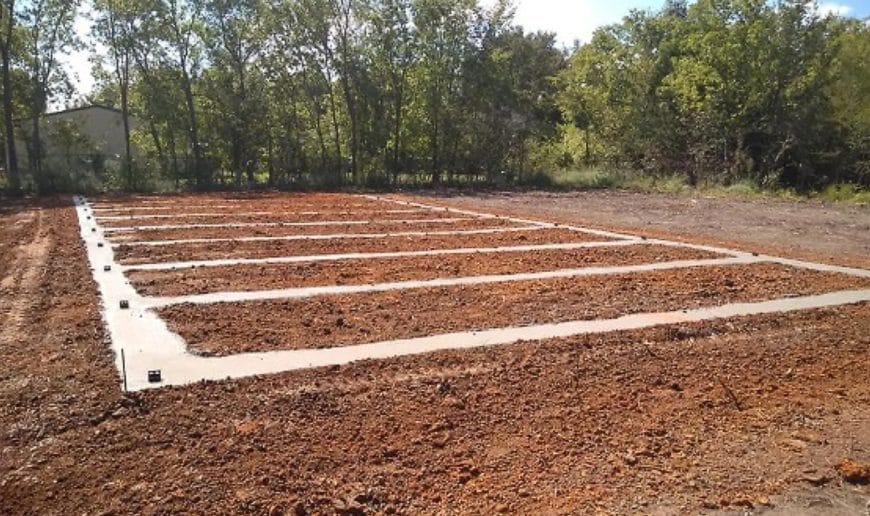
Pros | Cons |
|---|---|
Cost-effective | Not ideal on slopes |
Easy plumbing installation | Not ideal in high moisture areas |
Ease of construction | Load limitations |
Suitable for various soil conditions | Vulnerability to frost heave |
Flexibility in design | Susceptible to differential settlement |
3) Helical Pile / Screw Foundation – Seasonal Use
Helical pile / screw foundations can be a suitable choice for supporting portable homes like our EcoPods, especially in eco-friendly construction projects. These Helical pile / screws are literally screwed into the ground by a backhoe which has a specialized attachment. Installation is usually quick and simple. This system especially good in or around conservation areas because it has a minimal disturbance on the surrounding area.

Pros | Cons |
|---|---|
Eco-friendly | Initial cost may be higher than concrete |
Rapid installation | Limited depth |
Versatility | Corrosion risk |
Minimal site disruption | Soil compaction |
Cost-effective | Needs specialized equipment for installation |
4) Sonotube Foundation – Seasonal Use
A Sonotube foundation is a type of formwork used to create concrete columns and footings. Sonotubes are cardboard tubes that serve as molds for pouring concrete, creating cylindrical columns that extend below ground level. Sonotube foundations are a practical, cost-effective solution for small to medium-sized construction projects, particularly where the load requirements are relatively low. They offer ease of use, flexibility, and a clean finish but are limited in their load-bearing capacity, depth, and susceptibility to weather conditions. For larger, more demanding projects, or in challenging soil conditions, other foundation types may be more appropriate.
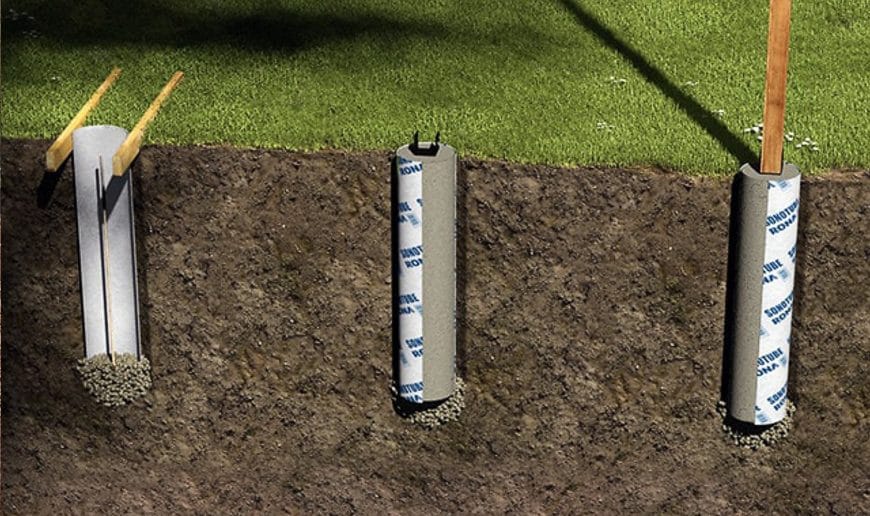
Pros | Cons |
|---|---|
Easy to install | Limited load-bearing capacity |
Cost-effective | Limited depth |
Versatility | Susceptible to freeze-thaw cycles |
Clean and precise concrete work | Labor-intensive for larger projects |
Biodegradable form material | Future settlement |
5) Non-Heated Slab Foundation – Seasonal Use
A slab foundation is a single, solid piece of poured concrete, generally laid on a 4 to 6-inch layer of gravel or sand. The slab is typically slightly larger than the home itself, with skirting used to conceal the gap between the slab and the structure. A non heated slab foundation is recommended as the best foundation for seasonal use EcoPods
A non-heated slab foundation, commonly referred to as a standard slab-on-grade foundation, is a type of foundation where a single, large concrete slab is poured directly onto the ground. This type of foundation does not include integrated heating elements.

Pros | Cons |
|---|---|
Durability | Lack of insulation |
Cost-effective | Potential for cracking |
Pest resistance | Limited access to utilities |
Low maintenance | No extra storage space |
No Ventilation Needed | Vulnerability to moisture in wet areas |
4 SEASON USE
1) Sonotube with Insulated Panel Skirt – Four Season Use (recommended)
This system has been developed by us and is ideal for our EcoPods because they are lightweight and smaller than large traditional homes. It is also ideal for areas with challenging terrain or where cost efficiency is a priority.
The insulated panels are the same ones we use on our pods. They are steel on both sides with insulation in the middle. The area between the ground and floor is not only insulated but also heated. This combination makes the floor nice and cozy.
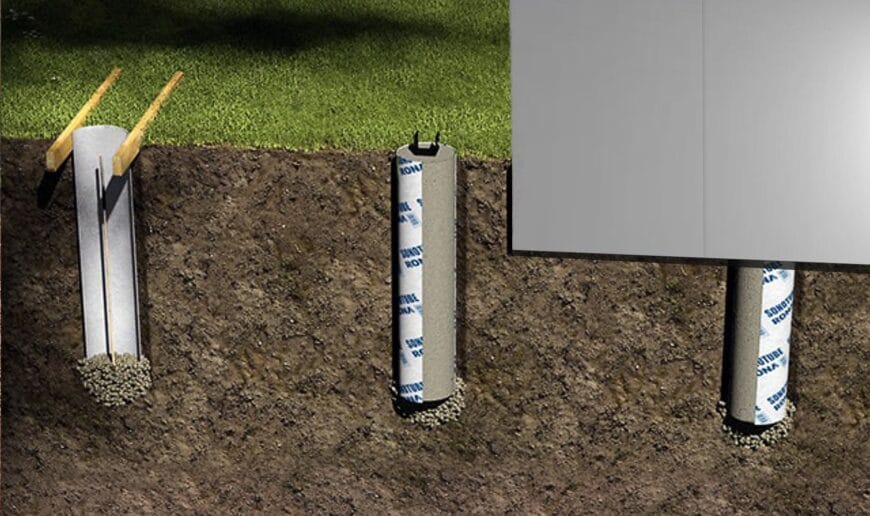
Pros | Cons |
|---|---|
Easy to install | Limited load-bearing capacity |
Cost-effective | Limited depth |
Versatility | Susceptible to freeze-thaw cycles |
Clean and precise concrete work | Labor-intensive for larger projects |
Biodegradable form material | Future settlement |
2) Heated Pit Foundation – Four Season Use
Pit foundations are similar to basement foundations, but instead of creating a full basement, a pit is dug to create a crawl space. This space can be heated and reduce your energy costs and increase comfort, especially in cold climates. Pit foundations can be made of either poured concrete or cinder block. While this option is more affordable than a full basement foundation, it is still more expensive than other alternatives and does not provide the opportunity to add extra living space to your home in the future.
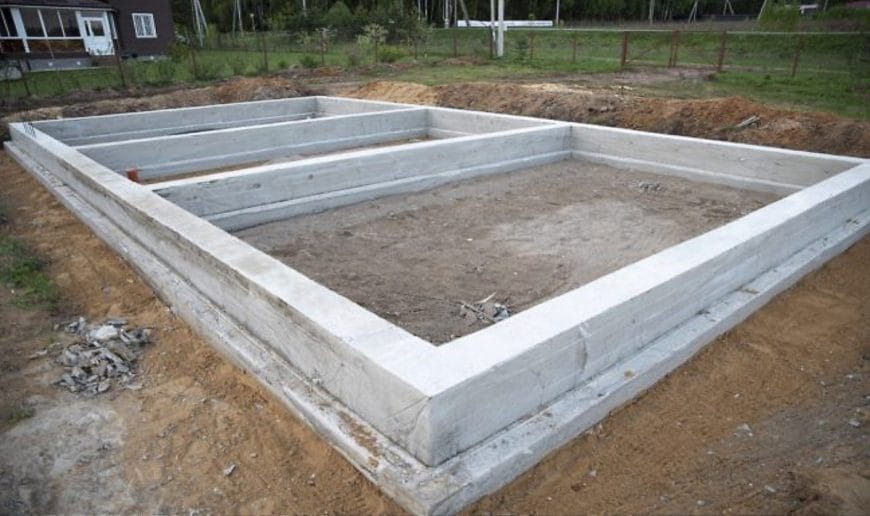
Pros | Cons |
|---|---|
Energy efficiency | Higher initial cost |
Enhanced comfort | Potential for heat loss |
Space for utilities | Utility maintenance challenges |
Reduced moisture issues | Limited additional space |
Improved air quality | Limited asceses in crawl space |
3) Heated Basement Foundation – Four Season Use
Basement foundations are expensive, but they offer the best resale value, making them a wise investment. They offer superb support and allow you to increase the square footage of your home. Usually, basement foundations are partially or fully below ground and can be a good choice if you have rocky or sandy soil below your home.
A heated full basement foundation includes radiant heating systems installed within the basement floor or walls, offering warmth and comfort throughout the space. This type of foundation can transform a basement from a chilly, underutilized area into a cozy, livable part of the home.
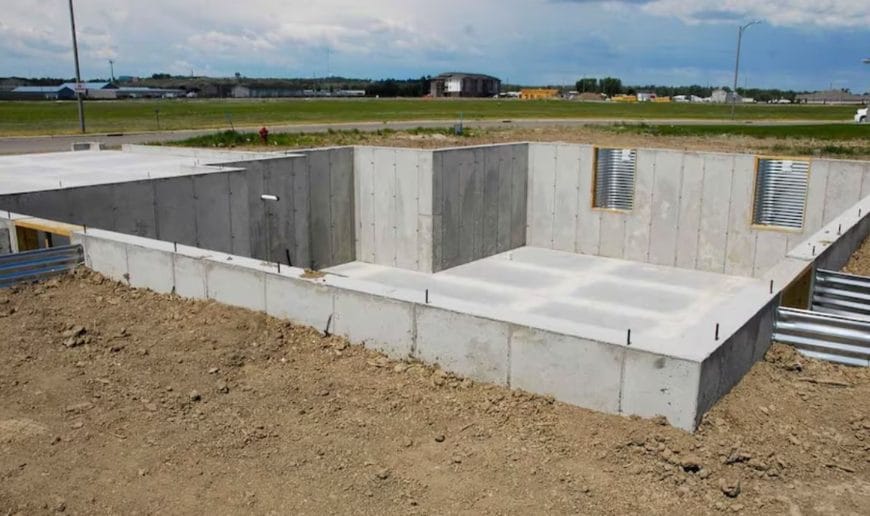
Pros | Cons |
|---|---|
Comfort and livability | High initial cost |
Energy efficiency | Longer heat-up time |
Increased home value | Potential for heat loss |
Improved air quality | Requires more energy to heat |
Potential for multi-zone heating | Limited possibility in rocky places |
Summary:
Before starting any foundation work for your EcoPod, it would be wise to consult with an experienced foundation professional. Their knowledge will help evaluate your EcoPod's needs and the local soil conditions. This will ultimately lead to the selection of the best foundation solution, for your area ensuring the safety and long-lasting stability of your EcoPod.
At EcoPod Structures, we know that you have many choices ahead and will always stand by to answer any questions and offer friendly advice. We want the best outcome in your experience when finding a home for your EcoPod. Factors outside your or anyone's control are possible, such as soil conditions, topography, or access to certain locations with dense homes or trees. Having a good knowledge of these situations will prevent any delays or setbacks when getting your EcoPod. We also have tips and other info you may wish to consider before you make any decisions.
Read More






